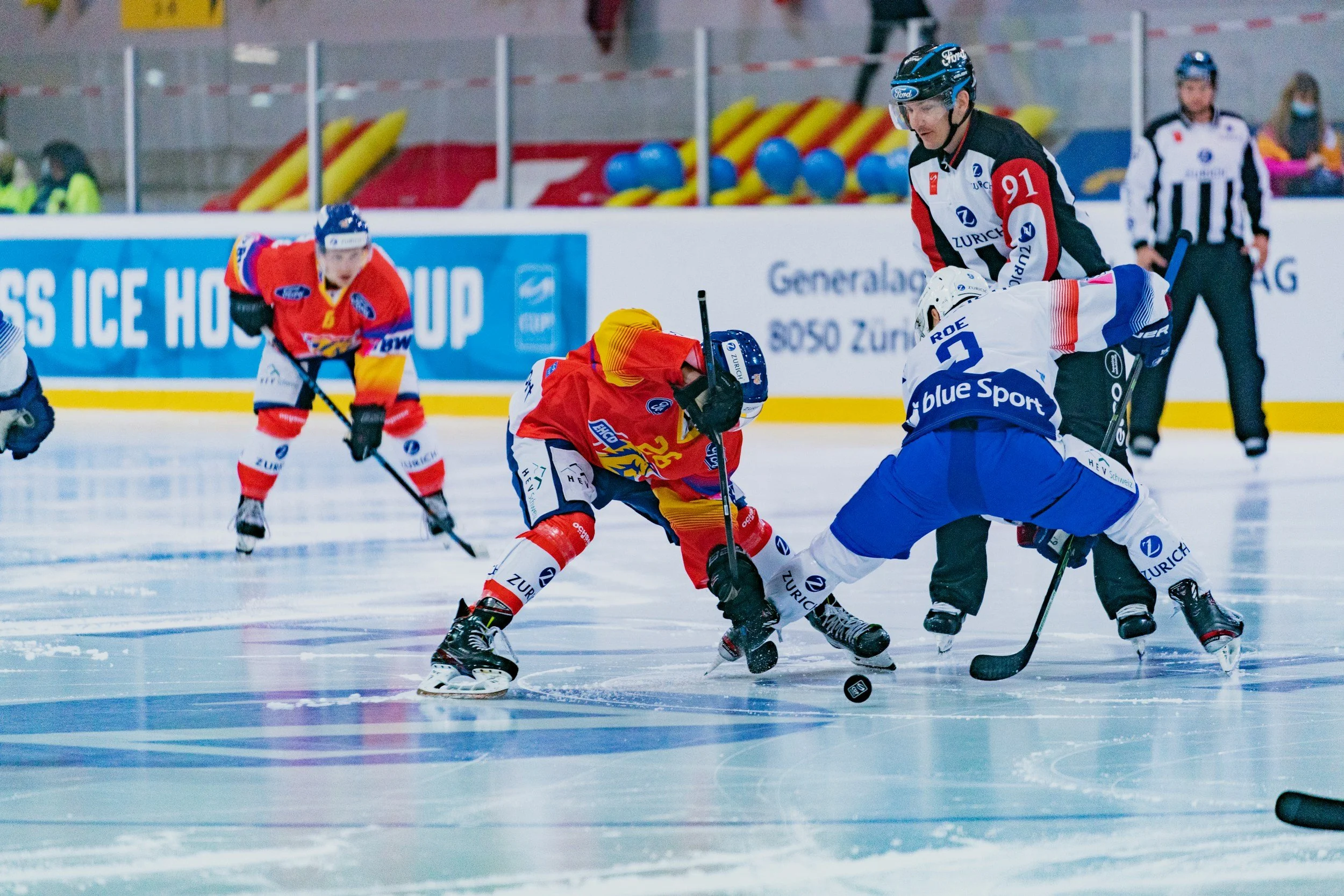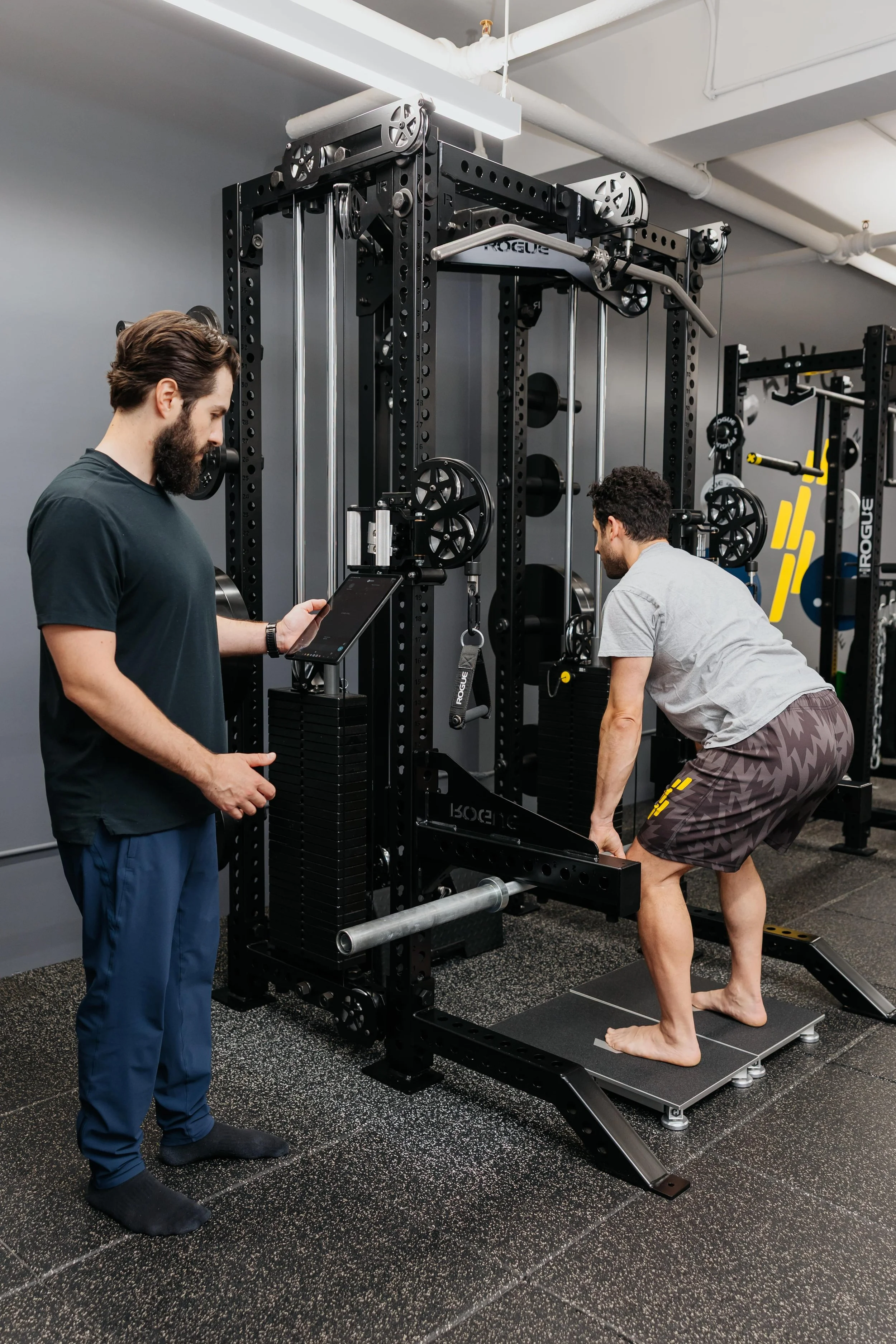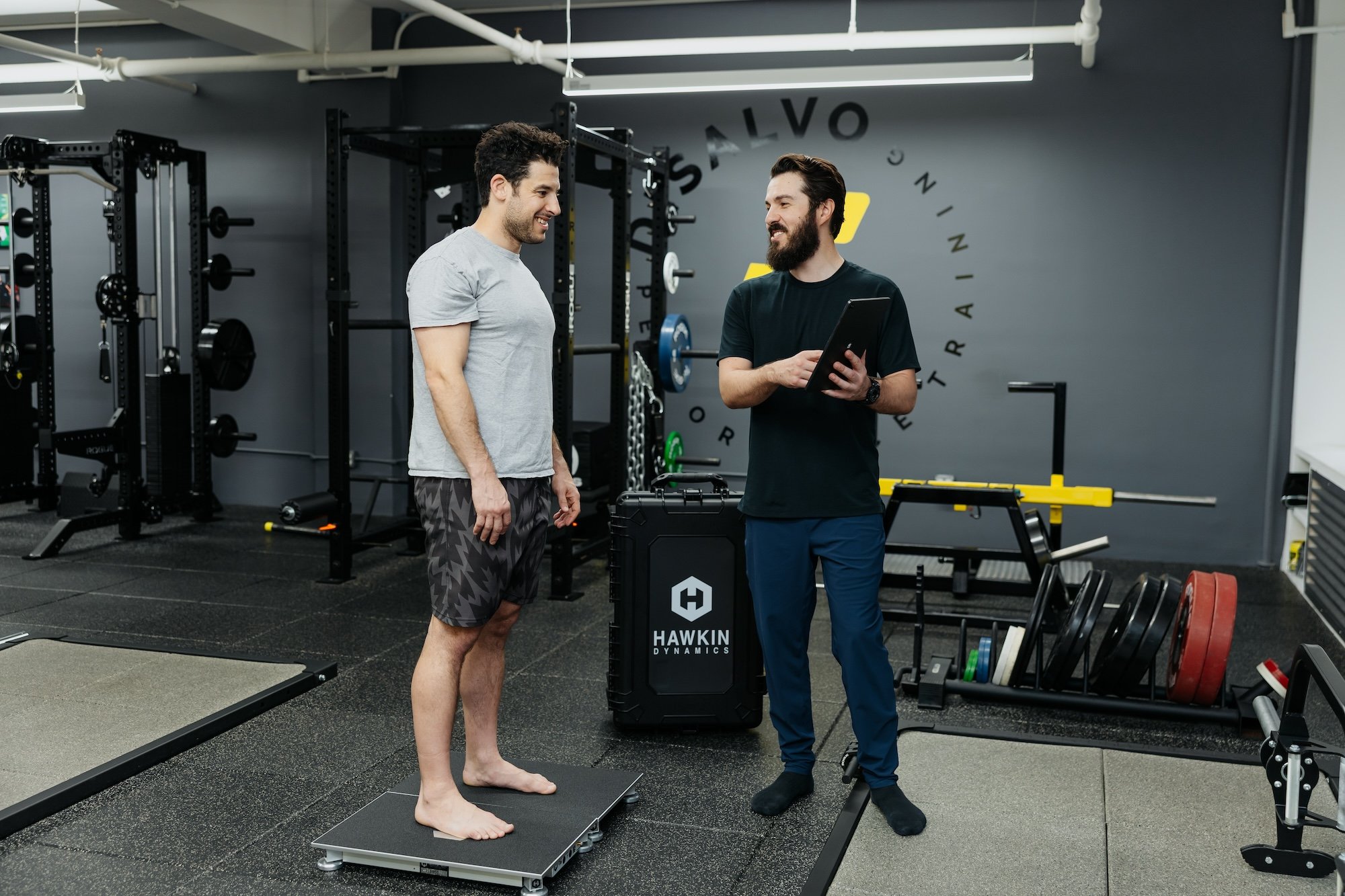The Best Offseason Training for Hockey Performance
When the offseason rolls around, many hockey players will take the opportunity to diversify their training.
This newfound free time is typically when we see more players interested in hitting the weight room, but then the age-old question pops up: what should I be doing in the gym as a hockey player?
Considerations
A hockey season at any level is hard on the body, and incredibly unpredictable. Between frequent practices, games, travel, unpredictable meals (outside of major organizations that may help you here), your weight can fluctuate, your overall recovery can be up and down, and your body can feel like it never really got back to normal before the next time you stepped on the ice. That cumulative wear and tear can creep up on you in negative ways in the long run, at any age.
Not to mention, skates are very restrictive and skating is very different from walking or running. Your stride is often going to start with a dominant leg, and a similar motion, which potentially is complicated by problems of overuse. This often manifests itself in asymmetry between limbs. That inherently isn’t a terrible thing, but the wider the discrepancy, the more it should be monitored.
So where’s a good place to start?
Isometrics
Isometrics can best be described as creating maximum force with no/near zero velocity. In other words, you’re trying really hard, but you’re not actually moving.
You can break isometrics down into two categories:
Yielding: these are movements in which you are pausing or stopping a weight or object and using the contractions in your body to prevent its movement. You’re “yielding” to the weight.
Overcoming: these are isometrics in which you will never actually move the weight or object no matter how hard you try (by design). You’ll never “overcome” the weight.
Isometrics are very useful to athletes, specifically hockey players because one of their best uses is to groove a new movement and teach your brain and body how to do a new exercise.
Physical therapists will often use isometrics to orient athletes back to training and note them for their use in recovery. Strength coaches like myself use it for similar reasons: they’re a safe way to work hard and learn how you move. We can make corrections in this phase that will carry-over to future workouts and get you better at training.
Because there is little to no movement in the exercise, these exercises have a limited shelf life in my experience. Anywhere from 1 to 3 weeks depending on the athlete before you need to change it up.
Example: Deadlift to the pins, done for 3 reps per set with 6 second holds (shown above with a straight bar, but you can use a Trap Bar too):
Slow Eccentrics
After a phase of eccentric training, and sometimes even concurrently with it, slow eccentric exercises are very useful in taking the next step to building useful muscle mass, increasing strength and further improving your movement efficiency.
“Your development as an athlete can’t just revolve around the things that look exactly like the game of hockey.”
Slow eccentric training refers to using a tempo on the “downward” phase of a movement, or the “non-power creating” portion of the movement. For example, In a bench press, it’s the phase when you’re lowering the bar to your chest.
Slow eccentric movements are key in an early offseason program because they work toward creating muscle mass that is useful to an athlete, help bridge gaps in strength, and perhaps, most importantly, teach intent.
It’s easy to move haphazardly or rush through exercises because you’re literally on the clock. Slow eccentrics teach athletes who have trouble generating tension or struggle with getting stronger how to put themselves in a position to handle more weight. In turn, increasing an athlete’s strength.
You’re also getting the benefit of doing a full velocity movement in the concentric phase (the upward/power creating portion), which brings you back into the realm of exercise people are most familiar with. More importantly, you’re adding some velocity to those movements that was lacking in the isometric phase.
Lastly, on the theme of restoration, the nature of slow eccentric training is opposite the fast, powerful bursts that hockey players find themselves moving through most often. Whether it’s on the ice or on the bikes, you need to work on different energy systems and different qualities. Your development as an athlete can’t just revolve around the things that look exactly like the game of hockey.
While slow eccentrics were long thought of as the main driver of muscle hypertrophy, but we now know from many studies that this is not the only way to do so. However, this is a time tested strategy, used at all levels of hockey preparation around the world.
To perform a slow eccentric movement, you can choose nearly any exercise.
We’ll use a bench press
1. After unracking the weight, slowly lower the weight down to your chest over 4 seconds, 5 seconds, 6 seconds, etc.
2. When you reach your chest, push the weight back up over the course of 1 second or less.
3. Repeat for multiple repetitions.
Slow everything down
These two styles of training are foundational in creating healthier, stronger, and more durable hockey players.
Once you successfully complete a phase of training that includes both isometrics and slow eccentric training, you’re primed to take on many different training styles — from power training, plyometrics, heavy lifting, energy system training, and more.
If you could use a hand, let us know. We’d love to help!
About the Author: Mark DiSalvo, CSCS
Mark is the founder and owner of DiSalvo Performance Training. He brings over a decade of experience training clients and athletes of all backgrounds and is the strength and conditioning coach to athletes of all levels and disciplines, from youth to professional and Olympic-level.
A lifelong athlete, Mark started playing hockey at a very young age in Pittsburgh, PA, and played competitively for over a decade before getting into martial arts.
Mark is currently purple belt in Brazilian Jiu Jitsu, with over 10 years of experience grappling.
A graduate of Northeastern University, he’s an NSCA Certified Strength and Conditioning Specialist (CSCS) and Sports Performance Expert. He’s also a Steve Maxwell Certified Kettlebell Instructor (Levels 1 & 2).
You can read more about him here.



